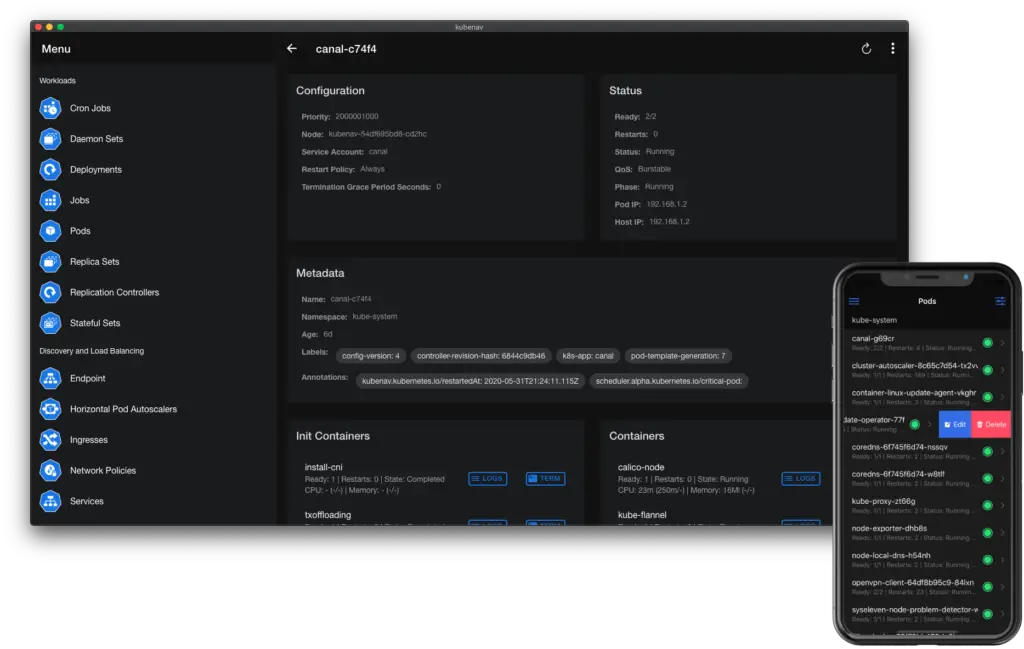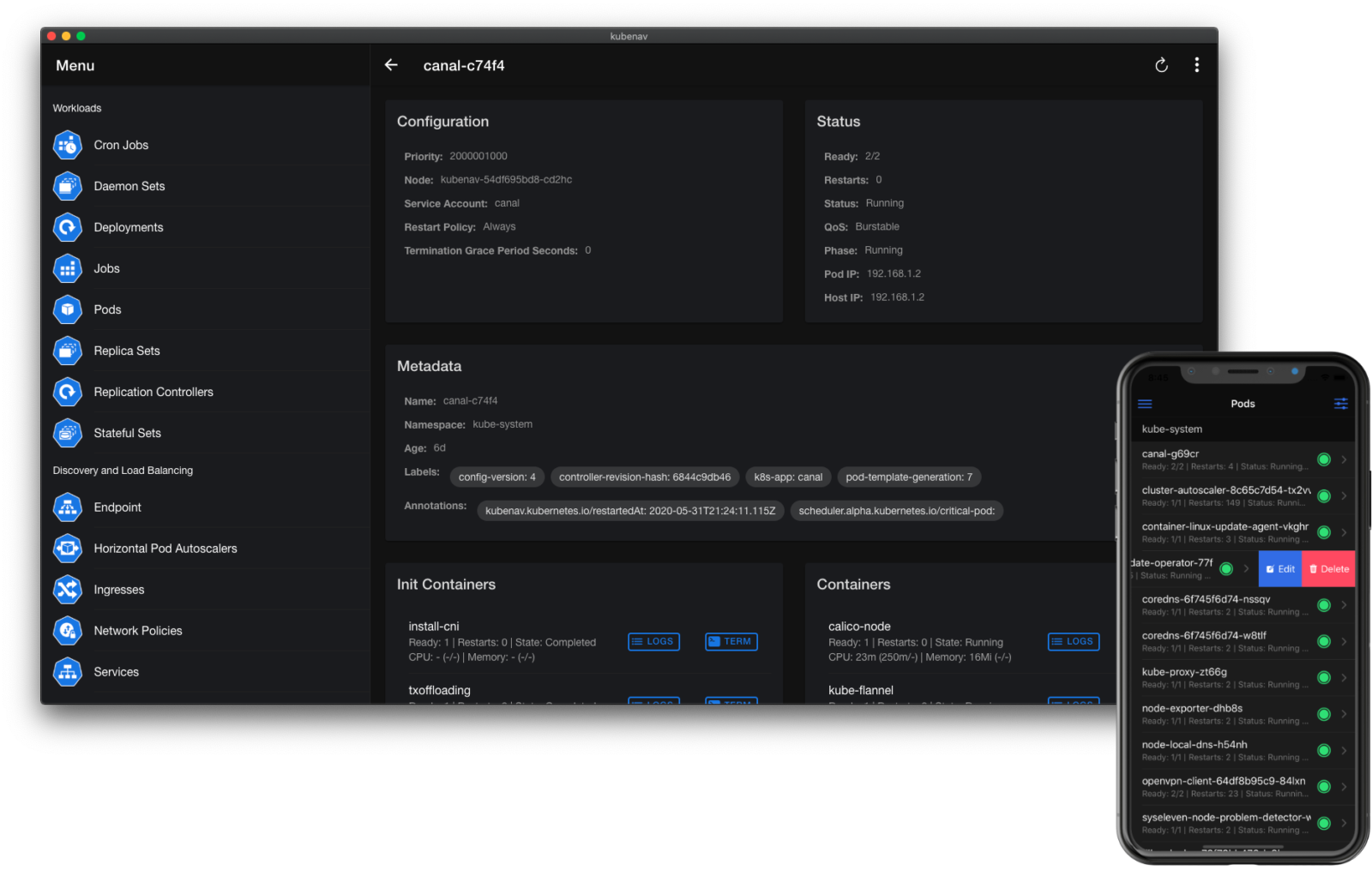

kubenav is the navigator for your Kubernetes clusters right in your pocket. kubenav is a mobile, desktop and web app to manage Kubernetes clusters and to get an overview of the status of your resources.
AppStore:
https://apps.apple.com/us/app/kubenav/id1494512160
GooglePlay Store:
https://play.google.com/store/apps/details?id=io.kubenav.kubenav
Desktop:
https://github.com/kubenav/kubenav/releases

kubenav is a mobile, desktop and web app to manage Kubernetes clusters. The app provides an overview of all resources in a Kubernetes cluster, including current status information for workloads. The details view for resources provides additional information. It is possible to view logs and events or to get a shell into a container. You can also edit and delete resources or scale your workloads within the app.
The app is developed using Ionic Framework and Capacitor. The frontend part of the app is implemented using TypeScript and React functional components. The backend part uses Go mobile for communication with the Kubernetes API server and Cloud Providers. So it is possible to achieve nearly 100% code sharing between the mobile and desktop implementation of kubenav.
Features
- Available for mobile, desktop and web: kubenav provides the same experience for mobile, desktop and web, with nearly 100% code sharing.
- Manage Resources: All major resources like Deployments, StatefulSets, DaemonSets, Pods, etc. are supported.
- Custom Resource Definitions: View all Custom Resource Definitions and mange Custom Resources.
- Modify Resources: Edit and delete all available resources or scale your Deployments, StatefulSets, DaemonSets.
- Filter and Search: Filter the resources by Namespace and find them by their name.
- Status Information: Fast overview of the status of workloads and detailed information including Events.
- Resource Usage: View the requests, limits and current usage of Pods and Containers.
- Logs: View the logs of a container or stream the logs in realtime.
- Terminal: Get a shell into a container, right from your phone.
- Manage multiple Clusters: Add multiple clusters via
kubeconfigor your preferred Cloud Provider, including Google, AWS and Azure. - Port-Forwarding: Create a port-forwarding connection to one of your Pods and open the served page in your browser.
- Prometheus Integration: kubenav allows you to view your Prometheus metrics directly in the dashboard and to build your own dashboards via the Prometheus plugin.
- Elasticsearch Integration: Discover your logs with the Elasticsearch plugin.
- Jaeger Integration: Analyze your traces with the Jaeger plugin.
Usage
The mobile version of kubenav can be downloaded from the App Store or Google Play. The desktop version for macOS, Linux and Windows can be downloaded from the release page.
For testing new features and faster feedback, we provide a beta version via Apple Testflight and Google Play. For the desktop version we are running nightly builds, where the binaries for each platform are uploaded as artifacts in the GitHub Action.
If you want to run kubenav in your Kubernetes cluster, simply run the following commands and open localhost : 14122 in your browser:
kubectl apply --kustomize github.com/kubenav/deploy/kustomize
kubectl port-forward --namespace kubenav svc/kubenav 14122
For further information, please view our documentation at docs.kubenav.io.


























Leave a Reply